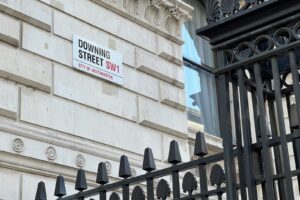By Ahmed Bawa, CEO of Rosemount Financial Solutions (IFA) Ltd
The overriding theme of 2024 so far has been that this is a time of falling interest rates. In the mortgage market for example, barely a day goes by without a succession of lenders announcing that they are reducing the rates on their mortgage products, as they compete for business.
The message is pretty clear – with inflation seemingly under control, or at least less of a runaway train than was the case a few months ago, base rate rises are at an end. Indeed, the fact that the Bank of England has held base rate at its last couple of meetings means that eyes are instead turning towards when base rate will be dropped, and that expectation is driving falls in borrowing costs.
There’s an important impact on savers too. The successive base rate rises seen in the aftermath of the mini-Budget have pushed up rates on savings accounts of all kinds, providing a far more eye-catching range of options for those looking to get a return on the money they have set aside.
But it’s not just mortgage interest rates that are being cut.
Downward momentum
We have already seen significant cuts to the savings deals on offer from providers. The expectation that base rate will drop is having an impact, with less impetus for providers to stand out from the crowd with market-leading products.
Take the latest data from Moneyfacts, which found that in December the average easy access rate dropped to 3.17%, the first fall recorded since September 2021. Rates on savings bonds have similarly declined – the average one-year bond for example dropped to 5.13%, the biggest single month fall seen since February 2009.
It’s not just the rates that have dropped, but the product choice too. The number of products available has declined to 1,918, with more than 90% of those failing to pay above the level of the base rate.
Even accounts which don’t offer a traditional interest rate are looking to cut returns for savers. Premium Bonds are one of the nation’s most popular savings accounts, with millions
holding them, yet they don’t pay interest. Instead, bondholders are entered into a monthly draw for cash prizes of up to £1 million.
While National Savings & Investments, the government-backed provider of Premium Bonds, repeatedly increased the ‘prize rate’ – essentially the number of prizes on offer to savers – last year, it has scaled it back already this year.
Moving quickly
While rates are declining, savers are arguably in a better position today on account of the improving position with inflation. After all, the priority for all savers should be securing an inflation-beating return, which was not possible a few months ago when inflation remained so high.
That’s because, unless the rate of return is higher than the rate of inflation, then your savings are losing value in real terms. The balance itself may be increasing, but the purchase power of those funds is on the decline.
Now though, with the consumer price index measurement dropping to 3.9%, savers can lock their money into accounts offering an inflation-beating return, though that comes with the potential downside of having to lock that money away for a while.
Given no easy access accounts offer such a return, savers who are focused entirely on securing the best possible rate will be increasingly looking towards longer term deals, where the money is locked in a bond for at least 12 months.
However, the fact that providers are pulling back on the rates of return mean it’s crucial for savers to move quickly. The best deals are unlikely to be around for long.
ISAs have rarely been so important
It’s also worth reflecting on the growing importance of ISAs. The selling point of ISAs has always been the fact that the returns you earn from them, whether your money is kept in cash or stocks and shares, is entirely tax-free – HMRC cannot take a cut.
However, in recent years that particular perk has been less relevant. With the personal savings allowance ensuring that basic rate taxpayers can earn £1,000 in interest a year free of tax (dropping to £500 for higher rate taxpayers), and mediocre rates of interest on offer, only a relative few were ever in danger of passing that threshold.
But the strong improvement in savings rates over the last year has changed the equation. Now far more savers, even if they only have relatively modest savings balances, are in danger of having to pay tax on those returns.
As a result, making the most of the £20,000 annual ISA allowance as a first port of call for your savings has become a more compelling proposition. That will likely remain the case even if base rate does fall in the months ahead, and savings providers start to pull back on the returns they offer.















